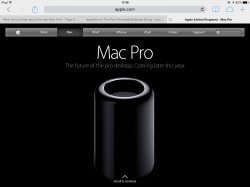I think going Thunderbolt would be much better justified if there were way cheaper PCIe-Thunderbolt adapters, though, since Thunderbolt is supposed to be PCIe in cable form.
First, Thunderbolt is not PCIe in cable form. There already is an "external PCIe" standard. Thunderbolt isn't that.
Second, one factor for PCIe external expansion boxes being expensive is that most folks don't need them. Not enough folks buy them so the cost is always going to be escalated a bit higher.
Thunderbolt means that the functionality of a PCIe card doesn't have to be packaged as a classic PCIe card. For example Blackmagic Intensity product http://www.blackmagicdesign.com/products/intensity/models/
As a card in the form of the "Intensity Pro". As a TB box in the form of "Intensity Extreme". Same break out cabling. Same functionality. Marginally different connectivity one of which hooks up to the entire Mac Line up.
Some vendors aren't going to repackage their classic cards as a box, but those also aren't particularly likely to be the volume solutions that would drive problems/benefits for expansion chassis.
----------
One thing I wish is that they offer a cheaper model for the Mac Pro. Like a cheaper model, with older Xeons, ...
The older Xeons ( 3500/3600 and 5500/5600 series) are being discontinued this year. Apple doesn't have a Xeon E5 v1 product base, so older ( "before v2 " ) E5 isn't a ready made option either of selling "last year's E5".
Frankly, there are older models being offered. Visit the refurb pages if want to buy from Apple ( In USA, http://store.apple.com/us/browse/home/specialdeals/mac/mac_pro ) Hit the used Mac sites if not. It is already being done. Same situation is likely to still be in effect in late 2014 and early 2015 when "last year's" 2012 and 2013 Mac Pros will still up for sale.







